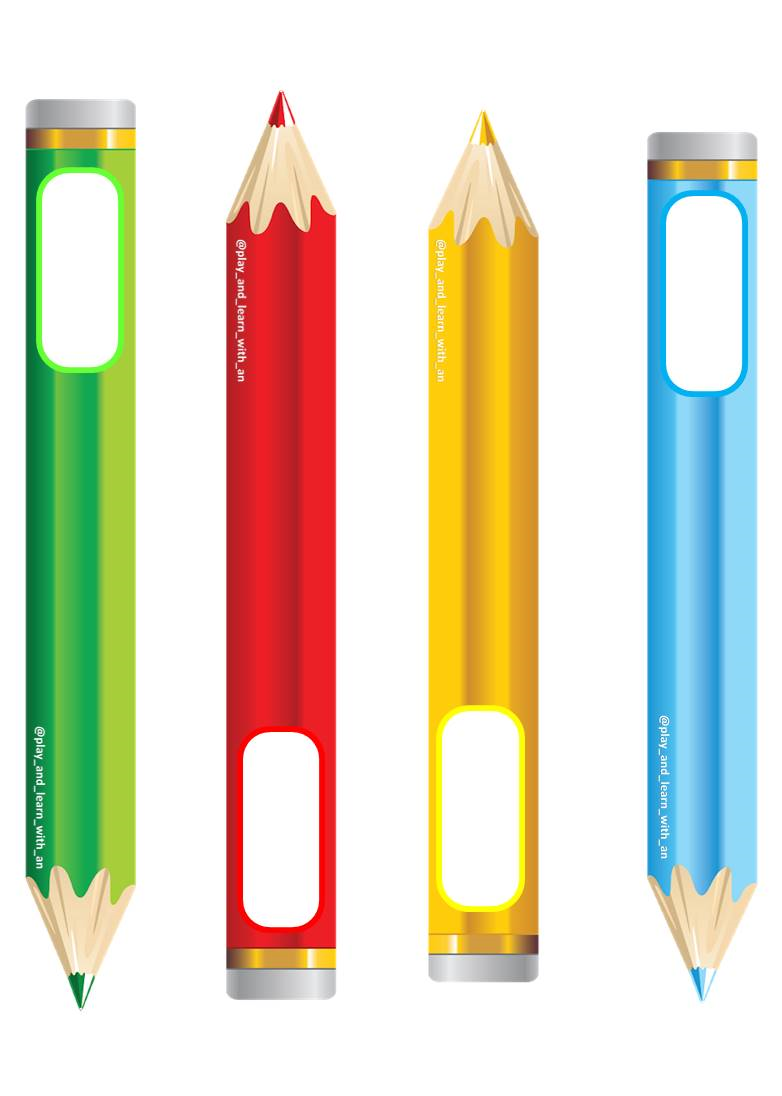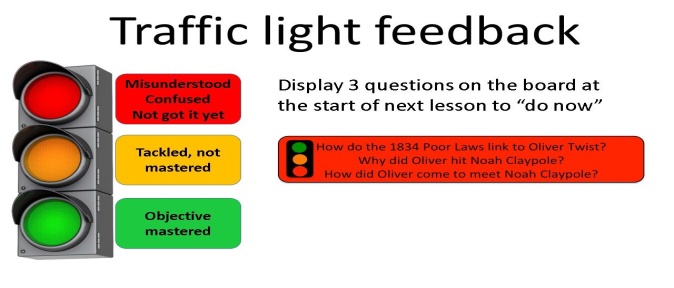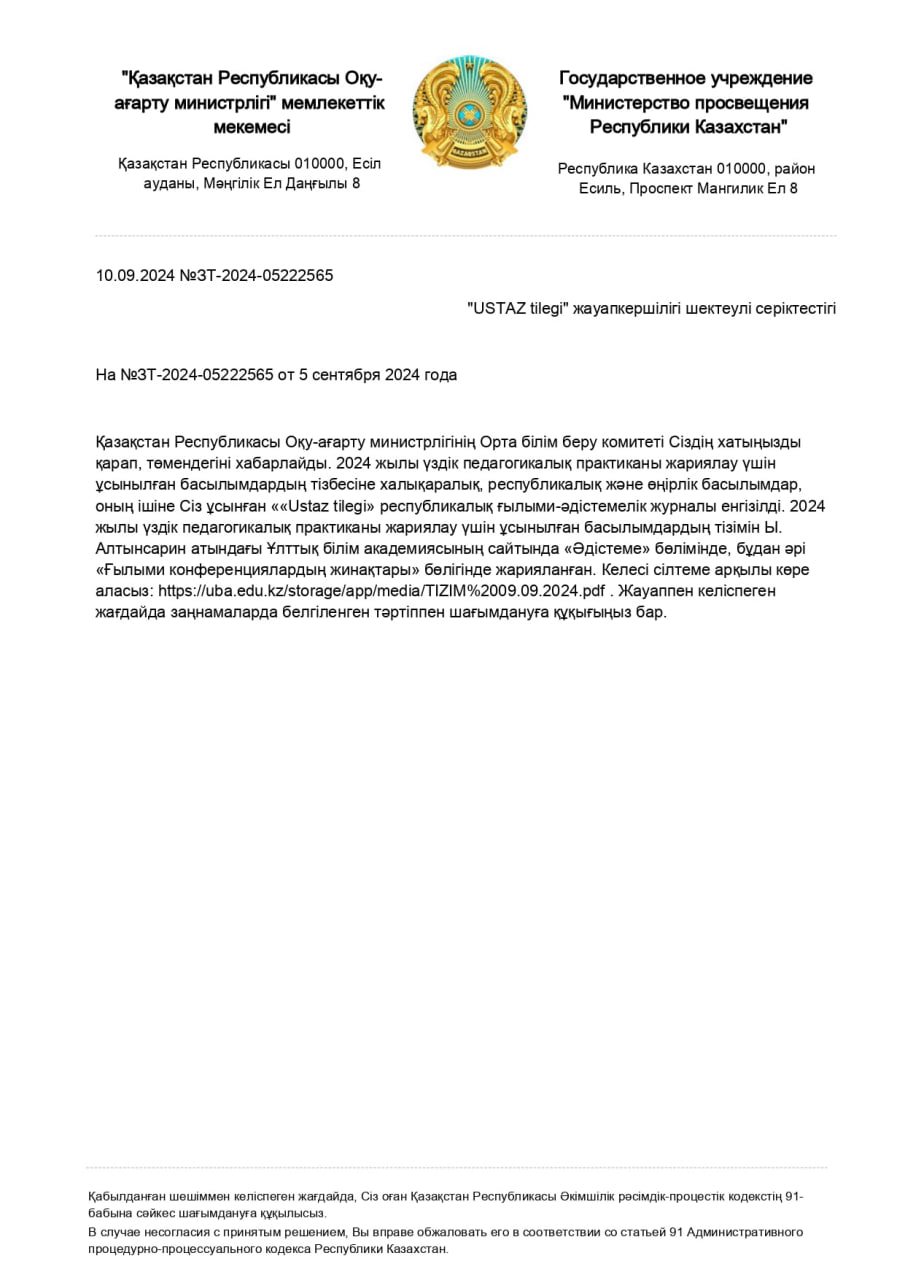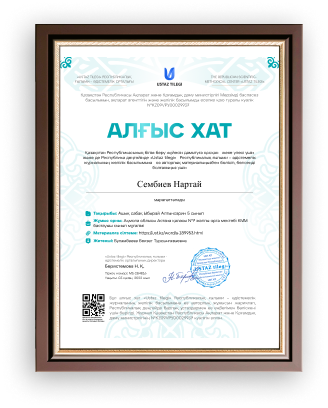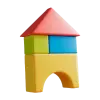
Short term plan: term 2
|
Unit 3: Entertainment and media |
Lesson 28 |
||
|
Teacher name: |
Duisenbaeva A.S |
||
|
Date: |
08.11.24 |
||
|
Grade: 8 « АӘБВ» |
Number present: |
absent: |
|
|
Lesson title |
Use of English: Past simple, Past continuous |
||
|
Learning objectives |
8.5.2.1 write with minimal support about real and imaginary past events, activities and experiences on a range of familiar general topics and some curricular topics 8.3.6.1 link comments with some flexibility to what others say at sentence and discourse level in pair, group and whole class 8.6.7,1 use a variety of simple perfect forms to express recent, indefinite and unfinished past on a range of familiar general and curricular topics |
||
|
Lesson objectives |
Learners will be able to: - revise/present the past simple and the past continuous and identify their uses - practise the past simple/past continuous - practise the past simple/past continuous with time adverbs |
||
|
Value links |
Honesty – You may highly value telling people the truth. This one gets tricky when being honest can be hurtful to others. So, a person who really puts honesty first might be the sort of person who will tell the truth even if it hurts to do so. |
||
|
Plan |
|||
|
Stages / Time |
Teachers actions |
Students actions |
Assessment criteria |
Resources |
|
Beginning of the lesson Warming-up
3 min Pre-learning «Brainstorming» method 7 min. |
Organization moment : 1.Greeting. Ask about the weather. The teacher sets the lesson objectives, letting students know what to anticipate from the lesson. Warming up Where are you from? How old are you? What color is it? How many students are there in class? What day of the week today? revise the language from the previous lesson Lead – In |
The aim: To develop pupils speaking skills and create friendly atmosphere Efficiency: By wishing each other they feel better and feel the support of others Students of the class are listed. Students' attention is drawn to the lesson. • Learners talk about daily routines previous lesson vocabulary Determines the topic and purpose of the lesson Students say different words from the picture |
The teacher to assess learners for their ability. “Good job! Well done!” Formative Assessment
Good job! Descriptor: - talk about daily routines Point 1 Assessment criteria - Learners have met the learning objectives if they can talk about time adverbs |
Pictures worksheet Student’s book |
|
Middle of the lesson Presentation part. 30 min |
Ex:1 P:32 • Present the past simple. Say then write on the board: I watched TV yesterday. Underline watched and explain that this verb is in the past simple. Point to a S and say: You watched TV yesterday. Then write it on the board. Point to a male S and say: He watched TV yesterday. Then write it on the board. Present the other persons in the same way. Elicit that the verb is the same in all persons. •Explain/Elicit the spelling rules. Write the verbs work, love, play, study, travel and their past simple forms on the board: work – worked (most verbs take -ed to form their past simple form), love – loved (verbs ending in -e add -d), study – studied (verbs ending in consonant + -y lose -y and take -ied), play – played (verbs ending in a vowel + -y add -ed), travel – travelled (verbs ending in a vowel + l, p, k, b, etc. double the consonant and add -ed) Ex: 2 P: 32 • Explain the task and give Ss time to complete it. • Then check Ss’ answers around the class. Ex: 3 P: 32 • Explain the task and read out the example. • Give Ss time to complete the task in closed pairs. • Monitor the activity around the class. Ex: 4 b P: 32 • Ask Ss to read the theory box and elicit in which sentences we can write would instead of used to. Conclusion during the lesson some tasks differentiated by outcomes of the students and by their abilities. |
•Pupils read the text. Identify the tenses. ANSWERS 1 past simple 2 past continuous 3 past simple 4 past simple 5 past continuous 6 past continuous 7 past continuous 8 past continuous 9 past simple a past simple e past continuous b past simple f past continuous/ c past continuous past simple d past continuous •Pupils put the verbs in brackets into the pasts simple or past continuous ANSWERS 1 were you 2 was watching 3 did you see 4 was waiting 5 did Nurislam do 6 bought 7 went 8 Did you go 9 Was driving 10 got •Pupils use the time adverbs to make sentences about yourself and your friends ANSWERS I went to the theatre last month. My friend Gulnar and I went on holiday in 2015. I was studying when you called me. Sezim was reading a book while I was listening to music. I stayed home last Saturday. I went to the cinema with Temir two days ago. •Pupils complete with used to or would ANSWERS 1 used to/would 2 used to 3 used to 4 used to/would 5 used to/would 6 used to/would |
Descriptor: - read the text - identify the tenses Total: 2 point
Descriptor: - put the verbs in brackets into the pasts simple or past continuous Total: 2 point
pupils are evaluated by collecting colour pencils Descriptor: - use the time adverbs to make sentences Total: 3 point
Descriptor: - complete with used to or would Total: 3 point
-Make CCQ questions Yes / No Total: 10 point |
Card Worksheet Students book |
|
End of the lesson 5 min |
FEEDBACK Learners provide feedback on what they have learned at the lesson. Ex: Home task: Ex: 4 b P: 32 |
|
Poster Success
|
|
жүктеу мүмкіндігіне ие боласыз
Бұл материал сайт қолданушысы жариялаған. Материалдың ішінде жазылған барлық ақпаратқа жауапкершілікті жариялаған қолданушы жауап береді. Ұстаз тілегі тек ақпаратты таратуға қолдау көрсетеді. Егер материал сіздің авторлық құқығыңызды бұзған болса немесе басқа да себептермен сайттан өшіру керек деп ойласаңыз осында жазыңыз
Use of English: Past simple, Past continuous
Use of English: Past simple, Past continuous
Short term plan: term 2
|
Unit 3: Entertainment and media |
Lesson 28 |
||
|
Teacher name: |
Duisenbaeva A.S |
||
|
Date: |
08.11.24 |
||
|
Grade: 8 « АӘБВ» |
Number present: |
absent: |
|
|
Lesson title |
Use of English: Past simple, Past continuous |
||
|
Learning objectives |
8.5.2.1 write with minimal support about real and imaginary past events, activities and experiences on a range of familiar general topics and some curricular topics 8.3.6.1 link comments with some flexibility to what others say at sentence and discourse level in pair, group and whole class 8.6.7,1 use a variety of simple perfect forms to express recent, indefinite and unfinished past on a range of familiar general and curricular topics |
||
|
Lesson objectives |
Learners will be able to: - revise/present the past simple and the past continuous and identify their uses - practise the past simple/past continuous - practise the past simple/past continuous with time adverbs |
||
|
Value links |
Honesty – You may highly value telling people the truth. This one gets tricky when being honest can be hurtful to others. So, a person who really puts honesty first might be the sort of person who will tell the truth even if it hurts to do so. |
||
|
Plan |
|||
|
Stages / Time |
Teachers actions |
Students actions |
Assessment criteria |
Resources |
|
Beginning of the lesson Warming-up
3 min Pre-learning «Brainstorming» method 7 min. |
Organization moment : 1.Greeting. Ask about the weather. The teacher sets the lesson objectives, letting students know what to anticipate from the lesson. Warming up Where are you from? How old are you? What color is it? How many students are there in class? What day of the week today? revise the language from the previous lesson Lead – In |
The aim: To develop pupils speaking skills and create friendly atmosphere Efficiency: By wishing each other they feel better and feel the support of others Students of the class are listed. Students' attention is drawn to the lesson. • Learners talk about daily routines previous lesson vocabulary Determines the topic and purpose of the lesson Students say different words from the picture |
The teacher to assess learners for their ability. “Good job! Well done!” Formative Assessment
Good job! Descriptor: - talk about daily routines Point 1 Assessment criteria - Learners have met the learning objectives if they can talk about time adverbs |
Pictures worksheet Student’s book |
|
Middle of the lesson Presentation part. 30 min |
Ex:1 P:32 • Present the past simple. Say then write on the board: I watched TV yesterday. Underline watched and explain that this verb is in the past simple. Point to a S and say: You watched TV yesterday. Then write it on the board. Point to a male S and say: He watched TV yesterday. Then write it on the board. Present the other persons in the same way. Elicit that the verb is the same in all persons. •Explain/Elicit the spelling rules. Write the verbs work, love, play, study, travel and their past simple forms on the board: work – worked (most verbs take -ed to form their past simple form), love – loved (verbs ending in -e add -d), study – studied (verbs ending in consonant + -y lose -y and take -ied), play – played (verbs ending in a vowel + -y add -ed), travel – travelled (verbs ending in a vowel + l, p, k, b, etc. double the consonant and add -ed) Ex: 2 P: 32 • Explain the task and give Ss time to complete it. • Then check Ss’ answers around the class. Ex: 3 P: 32 • Explain the task and read out the example. • Give Ss time to complete the task in closed pairs. • Monitor the activity around the class. Ex: 4 b P: 32 • Ask Ss to read the theory box and elicit in which sentences we can write would instead of used to. Conclusion during the lesson some tasks differentiated by outcomes of the students and by their abilities. |
•Pupils read the text. Identify the tenses. ANSWERS 1 past simple 2 past continuous 3 past simple 4 past simple 5 past continuous 6 past continuous 7 past continuous 8 past continuous 9 past simple a past simple e past continuous b past simple f past continuous/ c past continuous past simple d past continuous •Pupils put the verbs in brackets into the pasts simple or past continuous ANSWERS 1 were you 2 was watching 3 did you see 4 was waiting 5 did Nurislam do 6 bought 7 went 8 Did you go 9 Was driving 10 got •Pupils use the time adverbs to make sentences about yourself and your friends ANSWERS I went to the theatre last month. My friend Gulnar and I went on holiday in 2015. I was studying when you called me. Sezim was reading a book while I was listening to music. I stayed home last Saturday. I went to the cinema with Temir two days ago. •Pupils complete with used to or would ANSWERS 1 used to/would 2 used to 3 used to 4 used to/would 5 used to/would 6 used to/would |
Descriptor: - read the text - identify the tenses Total: 2 point
Descriptor: - put the verbs in brackets into the pasts simple or past continuous Total: 2 point
pupils are evaluated by collecting colour pencils Descriptor: - use the time adverbs to make sentences Total: 3 point
Descriptor: - complete with used to or would Total: 3 point
-Make CCQ questions Yes / No Total: 10 point |
Card Worksheet Students book |
|
End of the lesson 5 min |
FEEDBACK Learners provide feedback on what they have learned at the lesson. Ex: Home task: Ex: 4 b P: 32 |
|
Poster Success
|
|

шағым қалдыра аласыз





